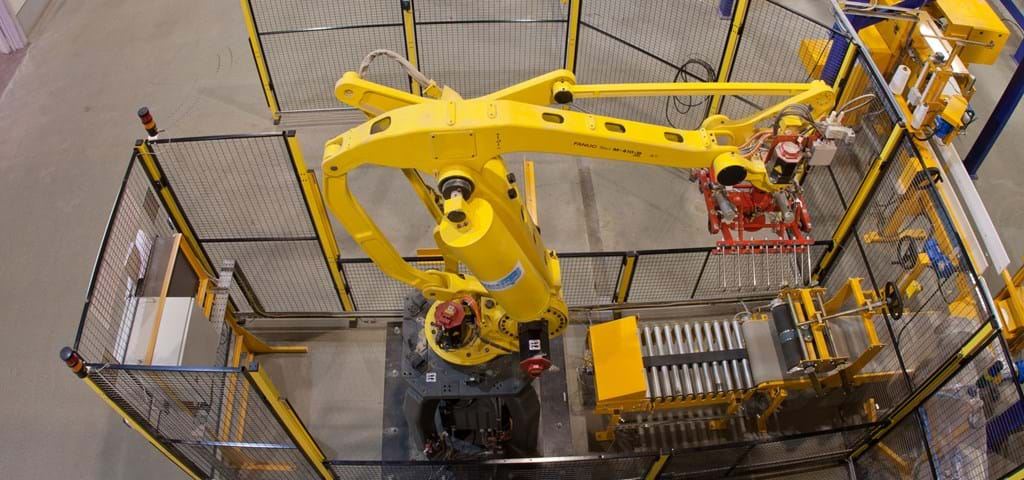
Bagging
The global trend goes towards handling of ready feed in bulk form. Nevertheless, in certain regions of the world, ready feed is mainly distributed in bags. In addition, special feed in small quantities is often sold in bags, and therefore bagging equipment is often an integrated part of a feed mill solution from SKIOLD.
Bagging scales
Bagging units for traditional 25-50 kg bags are available with different degrees of automation. Which solution to choose depends on factors such as requirements to capacity and the price for manpower in the local area.
Bagging systems can be divided into three categories:
Manual - With a manual bagging plant, the sack is placed on a mechanical scale, which fills the bag to the requested number of kg, after which it is stitched and palletized manually.
Semi-automatic - With a semi-automatic bagging plant, the sack is placed on an electronic scale, which fills the bag to the requested number of kg, after which it is automatically stitched and manually palletized.
Fully automatic - In a fully automatic bagging plant, the entire process is automatic. The capacity ranges from a few tons/hour to 30-40 tons/hour.
Sewing machines
The typical solution for closing of the bags is sewing. A very simple and inexpensive solution is a hand-held sewing machine, often operated by the operater of the bagging scale. Automatic sewing stations are used in larger plants.
Sewing belts
A sewing belt should be installed under the bagging scale, for transportation of the filled sacks from the scale to sewing. This will ease the operator's job handling the heavy bags, and thus increase the bagging speed. The sewing belt is equipped with guide bars, which prevent the filled bags from toppling over during the transport.
Palletizing
Placing of the bags on pallets can be done manually or automatically.
In manual palletizing, the bags are placed by hand. With an automatic palletizing system, a robot or automatic bag gripper collects the bag and places it on the pallet according to a selected, pre-programmed pattern.


 English
English
 Danish
Danish
 French
French
 Swedish
Swedish
 Vietnamese
Vietnamese
 Spanish
Spanish
 German
German
 English
English




